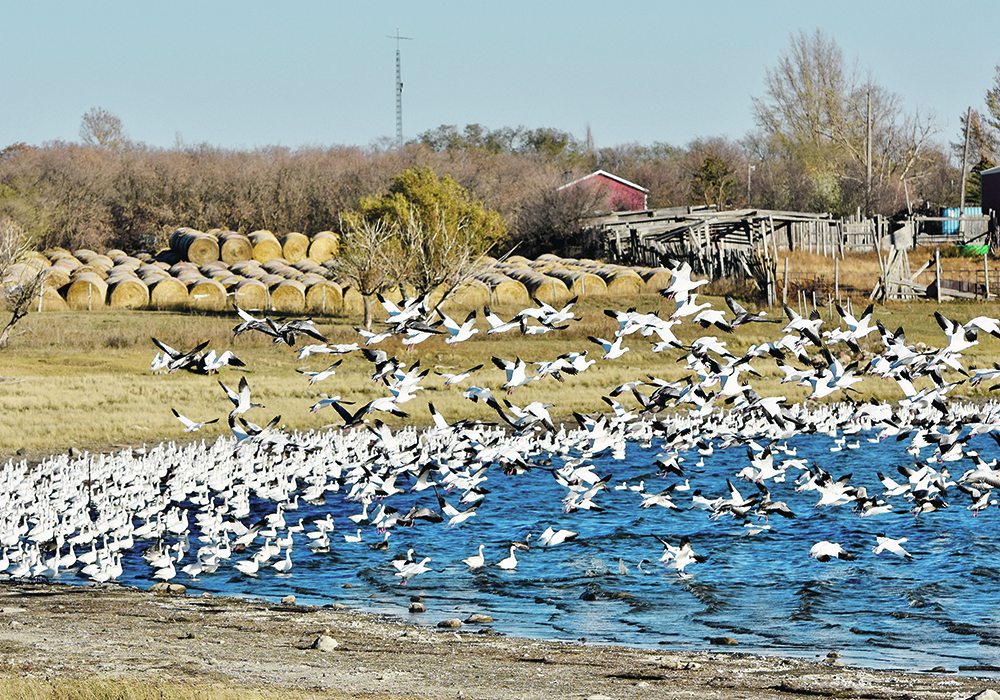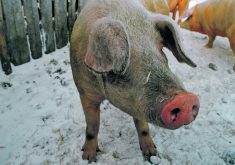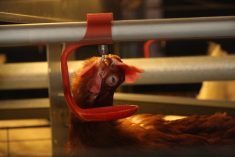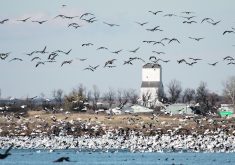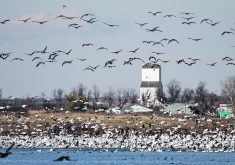Nearly two million birds have been affected by this year’s avian influenza outbreak across the four western provinces.
It has disrupted dozens of commercial poultry operations and resulted in mass culling.
With the wild bird population being largely blamed as the main vector of transmission and fall migration nearly over, the numbers of infected premises are beginning to dwindle.
Surveillance data on wild bird infection rates in Alberta, which saw the most infections in Canada resulting in the culling of more than 1.3 million domestic birds, reported numerous species infected with avian influenza.
Read Also

Why feds imposed EV tariffs
Moe and Kinew have a fight on their hands when it comes to eliminating the EV tariff. Canada has to worry about pissing off the U.S. and Mexico and hundreds of thousands of auto workers.
It has been Canada’s largest avian flu outbreak ever.
After escaping the worst of the outbreak in the spring, Manitoba saw 16 commercial poultry operations in the province hit with infections.
Wayne Hiltz, executive director of Manitoba Chicken Producers, said broiler chicken producers only saw a couple of operations directly impacted but the indirect impacts influence the provincial industry’s operations.
“We also had flocks delayed getting placed because (of) avian influenza in the United States. We had three or four flocks that were delayed getting placed,” he said. “That turns around and has a subsequent event because now we’re short eggs because those hens got placed three weeks late.”
A positive case at a broiler breeder operation earlier this year also had cascading effects.
“There was a direct effect on him but then we also saw 600,000 eggs that went missing from our supply for eggs to be put into hatchery for chicks for our broiler farms,” said Hiltz. “So, there are ripple effects.”
The three-kilometre exclusion zones established around infected premises also have had knock-on effects.
“There is financial loss for that but there is also mental health and stress and anguish with producers as well that test positive because they are in the business of raising these birds and taking care of them and to go through the effects of that can be very damaging to them as well,” said Hiltz.
Despite similar circumstances being felt across the country, supply of poultry products hasn’t been severely impacted nor has consumer demand.
Many poultry producer organizations have been preparing for such an outbreak since avian influenza first hit Canadian shores in 2004.
In Manitoba, which reported its first cases this year, there have been close calls of the disease in neighbouring Minnesota in previous years.
“It was right up to the Minnesota-Manitoba border in Roseau County (Minn.), which isn’t very many miles away from the heart of our poultry industry,” he said of a 2017 U.S. outbreak. “Our producers did everything right, like they’ve done this year, and there wasn’t one infected premise in Manitoba despite it being that close.”
Hiltz said poultry producers take biosecurity measures seriously and have mitigated worse outcomes.
“In some cases, you just can’t identify what the vector is. That’s what makes it troubling,” he said.
Flocks located near waterbodies frequented by migrating birds are one easily identifiable source.
“But some of the facilities that have broken out this year in Manitoba are breeder flocks. They are shower in, shower out facilities and there are no known vectors as to how those sites became infected,” said Hiltz.
He added this year’s strain appears especially infectious in Canada, North America and across the globe.
He credited the Canadian Food Inspection Agency for how it handled the outbreaks.
“Looking at the procedures, reviewing them where there is common sense science, maybe making changes, CFIA has shown a lot of flexibility making those changes quicker,” he said.
“We’ve appreciated their willingness to listen and work with us.”


